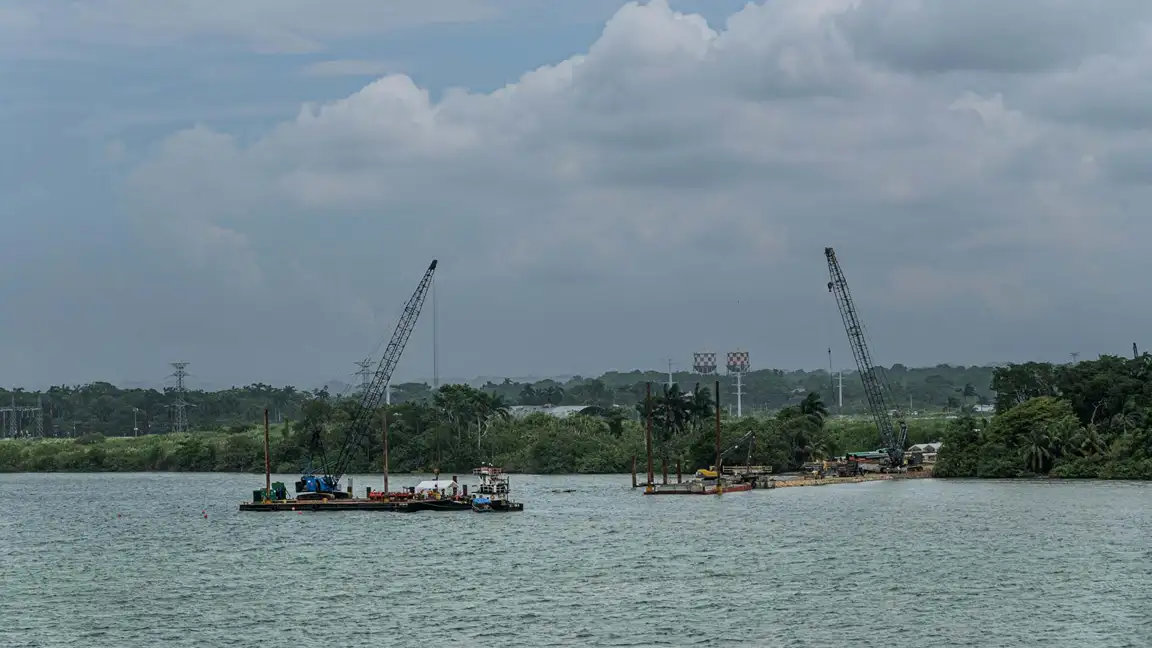The Concept of the No-Cost Dredging Model
In an innovative approach to tackle the persistent issues of siltation and flooding in West Bengal, the state government has rolled out a new dredging model designed to bring in revenue while drastically reducing financial burdens on the state exchequer. This new model, developed by the West Bengal Mineral Development and Trading Corporation Ltd (WBMDTCL), is being piloted on five key river stretches across the state.
The crux of the new dredging model lies in its “no-cost” approach, which aims to address long-standing river management problems without placing the financial strain on state resources. West Bengal’s Irrigation Minister, Manas Bhuiyan, explained that the Irrigation Department will identify the river stretches, channels, or khals that require dredging and assess the quantity of dredging needed. They will also evaluate the types of materials present in the riverbed, including sand, clay, and silt.
The primary aim is to clear these water bodies for flood management, but in the process, the state also stands to gain financially from the dredging activities. The state has partnered with private contractors who will conduct the dredging operations, providing a dual benefit: reducing flooding risks while creating revenue opportunities.
How the Model Works
Once the reach to be dredged is identified, the district administration works with the Irrigation and Waterways (I&WD) engineers to either handle the dredging themselves or outsource the task to private contractors. The contractors, in turn, are required to pay a royalty on the dredged material, such as sand and silt. The key innovation of this model lies in the return of a portion of the dredged soil to the government, which can be stored at government stackyards for various uses. This material can be repurposed in construction projects or other infrastructure initiatives, offering further value beyond just the dredging itself.
For more complex dredging operations, where additional technical expertise might be required, the I&WD itself steps in to carry out the work, ensuring both efficiency and proper oversight.
Financial Impact of the New Model
The financial implications of this new model are significant. Between 2011-12 and 2024-25, the West Bengal government has been spending an average of ₹500 crore annually on manual dredging across approximately 226 km of river and drainage channels. By contrast, the new pilot project has already generated ₹112 crore in revenue from 180 km of waterways, including 28 canals and rivulets. This revenue has come from a combination of the royalty payments made by contractors and the value of the dredged materials used in other governmental initiatives.
What makes this model particularly effective is that there is no financial outlay from the state government for the dredging work itself. Instead, private contractors are incentivized to fund the process, effectively turning a potential cost into a revenue-generating operation for the state.
Benefits to the Environment and Local Communities
The new dredging model not only benefits the state’s finances but also provides substantial environmental and societal advantages. By regularly dredging riverbeds and water channels, the state is mitigating the risk of flooding during heavy rains, a problem that has caused widespread devastation in the past. Clearing silt and debris from waterways allows for better water flow, reducing the likelihood of waterlogging and flooding in low-lying areas.
Additionally, the dredged materials, including sand and silt, can be utilized in various construction projects, including roads, bridges, and other infrastructure works, creating a more sustainable cycle of resource use.
Local communities will benefit from this improved flood management, as the enhanced drainage capacity of rivers and channels will reduce disruptions to daily life caused by heavy rainfall. Furthermore, with dredging being conducted regularly, the risk of long-term environmental degradation caused by siltation is minimized.
Future Prospects: Premium Sharing and Expansion
Looking to the future, the West Bengal government has proposed an exciting addition to the model: a premium-sharing system. Under this proposal, contractors will not only pay a royalty on the dredged materials but will also pay a premium to the government for the right to dredge certain areas. The government is currently working with the Finance Department to get approval for this enhanced model.
This premium-sharing approach could lead to even more revenue for the state and ensure that the dredging efforts continue to expand across more rivers, canals, and khals. The model has already been implemented successfully in several river stretches and could be extended to other regions across the state, potentially setting a precedent for other states grappling with similar issues of flooding and riverbed siltation.
Conclusion
The new dredging model in West Bengal is a remarkable example of how innovative thinking can solve long-standing environmental and financial problems. By turning a costly, often inefficient process into a revenue-generating one, the state is not only tackling flooding and improving infrastructure but is also setting the stage for sustainable river management practices. As the model continues to expand and evolve, it has the potential to offer both immediate and long-term benefits for the state’s environment, economy, and its citizens.
In adopting this approach, West Bengal is showing the way forward for other states grappling with similar challenges, proving that with the right model, dredging can be both an environmental solution and an economic opportunity.
